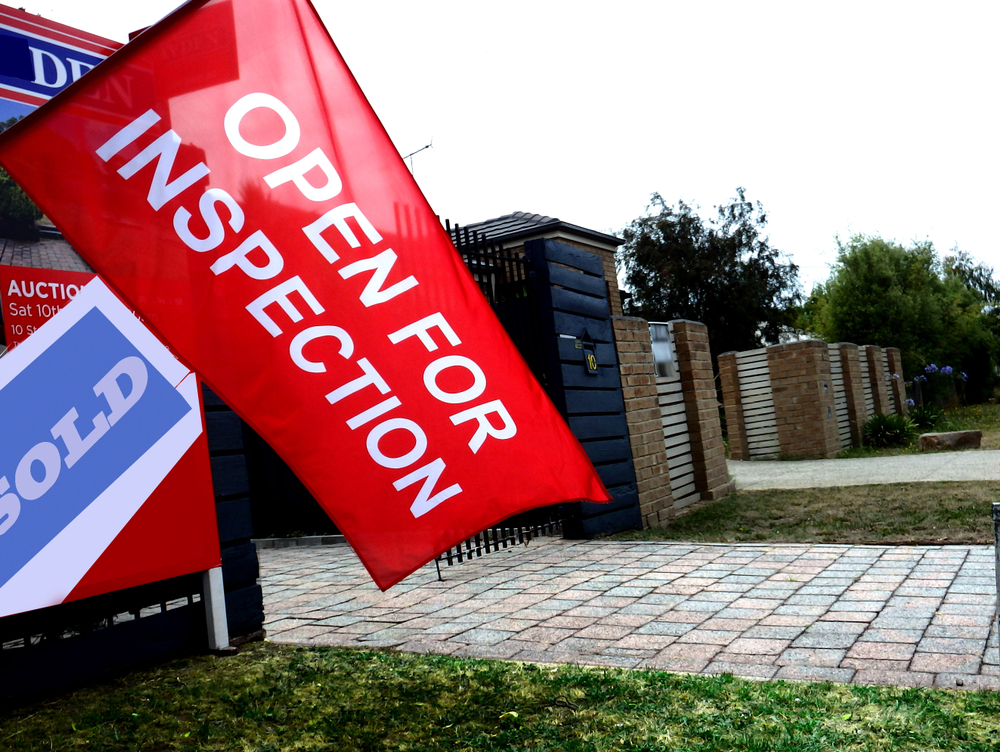Winning neighbourhoods where home values rose most in FY24
We reveal the No. 1 areas for price growth in each capital city
Home values across Australia rose by a median 8 percent in FY24, delivering the equivalent of $59,000 in new capital growth to the two-thirds of the population that owns a home, according to CoreLogic data. Investors received total returns of 12.2 percent over the year, including capital gains and gross rental income.
Very tight supply and demand in most capital cities except Melbourne and Hobart was a significant driver of the capital growth, with the smaller and more affordable capital cities of Perth, Brisbane and Adelaide experiencing the most price appreciation over the year. A lack of properties for sale trumped the usual dampening effect of higher interest rates.
As usual, some areas outperformed their city’s median growth benchmark. Here are the top SA3 areas for capital growth in each capital city of Australia in FY24. SA3 areas are large suburbs, or districts incorporating clusters of suburbs, with more than 20,000 residents.
Sydney
Home values across Sydney rose by a median 6.3 percent in FY24. The No. 1 area for growth was Mount Druitt. Its median value rose by 13.96 percent to $859,939. Mount Druitt is located 33km west of the CBD. It incorporates the suburbs of Mount Druitt, Ropes Crossing, Whalan and Minchinbury. The Mount Druitt community is very multicultural with almost one in two residents born overseas. It is home to many young families, with the median age of residents being 33 compared to the NSW median of 39.
Melbourne
Home values across Melbourne rose by a median 1.3 percent in FY24. The top area for capital growth was Moreland-North with 4.71 percent growth. This took the district’s median home value to $746,488. Moreland-North includes the suburbs of Hadfield, Pascoe Vale and Glenroy. It’s a multicultural community with a particularly large contingent of residents with Italian ancestry. One or both parents of 66 percent of residents were born overseas, according to the 2021 Census.
Brisbane
Home values across Brisbane rose by a median 15.8 percent in FY24. The No. 1 area for growth was Springwood-Kingston in Logan City. Its median value swelled by 25.55 percent to $710,569. Springwood-Kingston is approximately 22km south of Brisbane CBD. It incorporates the suburbs of Springwood, Kingston, Rochedale South and Slacks Creek. It is a multicultural community with one or both parents of 55 percent of the residents born overseas, according to the 2021 Census. More than 15 percent of residents have Irish or Scottish ancestry.
Adelaide
Home values across Adelaide rose by a median 15.4 percent in FY24. The best area for capital growth was Playford in Playford City. Its median value soared by 19.94 percent to $530,991. Playford is approximately 40km north of Adelaide. It incorporates the suburbs of Elizabeth Downs, Elizabeth Grove, Angle Vale and Virginia. It is home to many young people under the age of 40. The median age of residents is 33 compared to the state median of 41.
Perth
Home values across Perth rose by a median 23.6 percent in FY24. The No. 1 area for growth was Kwinana in Kwinana City. Its median value skyrocketed by 33.19 percent to $618,925. Kwinana is approximately 37km south of Perth CBD. It includes the suburbs of Leda, Medina, Casuarina and Mandogalup. Henderson Naval Base is located here and there is a significant community of servicemen and ex-servicemen living in the area. It is home to many young families, with the median age of residents being 33 compared to the state median of 38.
Canberra
Home values across the nation’s capital rose by a median 2.2 percent in FY24. The best area for capital growth was Weston Creek. Its median value rose by 5.24 percent to $937,740. Weston Creek is approximately 13km south-west of the CBD. It includes the suburbs of Weston Creek, Holder, Duffy, Fisher and Chapman. Approximately 43 percent of residents have a bachelor’s degree, which is on par with the ACT median but much higher than the national median of 26 percent. Household incomes are about 35 percent higher than the national median. Almost one in five residents work in government administration jobs.
Hobart
Home values across Hobart fell 0.1 percent in FY24. The top performing area for capital gains was Sorell-Dodges Ferry with 2.78 percent growth. This took the area’s median home value to $615,973. Sorell-Dodges Ferry is approximately 25km north-west of Hobart. It incorporates the suburbs of Richmond, Sorell, Dodges Ferry, Carlton and Primrose Sands. The area has a large community of baby boomers and retirees, with the median age of residents being 43 compared to the Australian median of 38.
Darwin
Home values across Darwin rose by a median 2.4 percent in FY24. The No. 1 area for growth was Litchfield. Its median value moved 3.21 higher to $672,003. Litchfield is about 37km south-east of Darwin and includes the suburbs of Humpty Doo, Acacia Hills and Southport. It has a high proportion of middle-aged residents, with the median age being 39 compared to the territory median of 33. About 12 percent of residents are Indigenous Australians. The biggest industries are government administration and defence. Median household incomes are about 35 percent higher than the national median.
A divide has opened in the tech job market between those with artificial-intelligence skills and everyone else.
A 30-metre masterpiece unveiled in Monaco brings Lamborghini’s supercar drama to the high seas, powered by 7,600 horsepower and unmistakable Italian design.
Buyer demand, seller confidence and the First Home Guarantee Scheme are setting up a frantic spring, with activity likely to run through Christmas.
The spring property market is shaping up as the most active in recent memory, according to property experts Two Red Shoes.
Mortgage brokers Rebecca Jarrett-Dalton and Brett Sutton point to a potent mix of pent-up buyer demand, robust seller confidence and the First Home Guarantee Scheme as catalysts for a sustained run.
“We’re seeing an unprecedented level of activity, with high auction numbers already a clear indicator of the market’s trajectory,” said Sutton. “Last week, Sydney saw its second-highest number of auctions for the year. This kind of volume, even before the new First Home Guarantee Scheme (FHGS) changes take effect, signals a powerful market run.”
Rebecca Jarrett-Dalton added a note of caution. “While inquiries are at an all-time high, the big question is whether we will have enough stock to meet this demand. The market is incredibly hot, and this could lead to a highly competitive environment for buyers, with many homes selling for hundreds of thousands above their reserve.”
“With listings not keeping pace with buyer demand, buyers are needing to compromise faster and bid harder.”
Two Red Shoes identifies several spring trends. The First Home Guarantee Scheme is expected to unlock a wave of first-time buyers by enabling eligible purchasers to enter with deposits as low as 5 per cent. The firm notes this supports entry and reduces rent leakage, but it is a demand-side fix that risks pushing prices higher around the relevant caps.
Buyer behaviour is shifting toward flexibility. With competition intense, purchasers are prioritising what they can afford over ideal suburb or land size. Two Red Shoes expects the common first-home target price to rise to between $1 and $1.2 million over the next six months.
Affordable corridors are drawing attention. The team highlights Hawkesbury, Claremont Meadows and growth areas such as Austral, with Glenbrook in the Lower Blue Mountains posting standout results. Preliminary Sydney auction clearance rates are holding above 70 per cent despite increased listings, underscoring the depth of demand.
The heat is not without friction. Reports of gazumping have risen, including instances where contract statements were withheld while agents continued to receive offers, reflecting the pressure on buyers in fast-moving campaigns.
Rates are steady, yet some banks are quietly trimming variable and fixed products. Many borrowers are maintaining higher repayments to accelerate principal reduction. “We’re also seeing a strong trend in rent-vesting, where owner-occupiers are investing in a property with the eventual goal of moving into it,” said Jarrett-Dalton.
“This is a smart strategy for safeguarding one’s future in this competitive market, where all signs point to an exceptionally busy and action-packed season.”
Two Red Shoes expects momentum to carry through the holiday period and into the new year, with competition remaining elevated while stock lags demand.
From Italy’s $93,000-a-night villas to a $20,000 Bowral château, a new global ranking showcases the priciest Airbnbs available in 2026.
In the remote waters of Indonesia’s Anambas Islands, Bawah Reserve is redefining what it means to blend barefoot luxury with environmental stewardship.




















